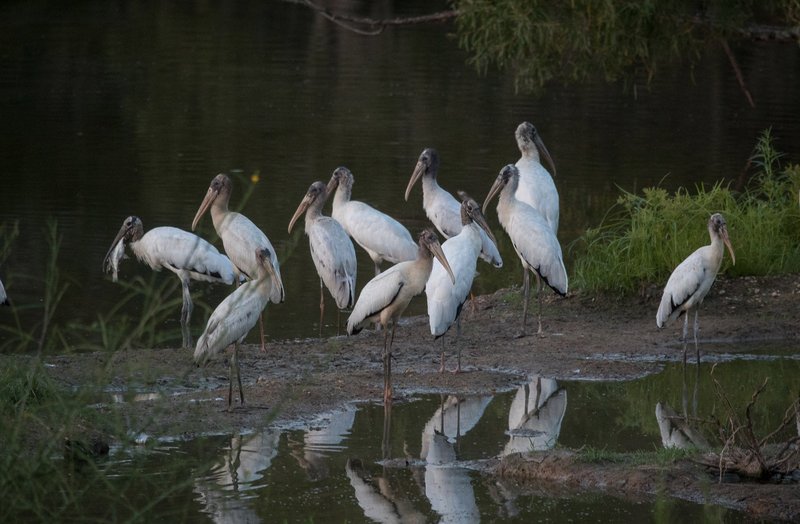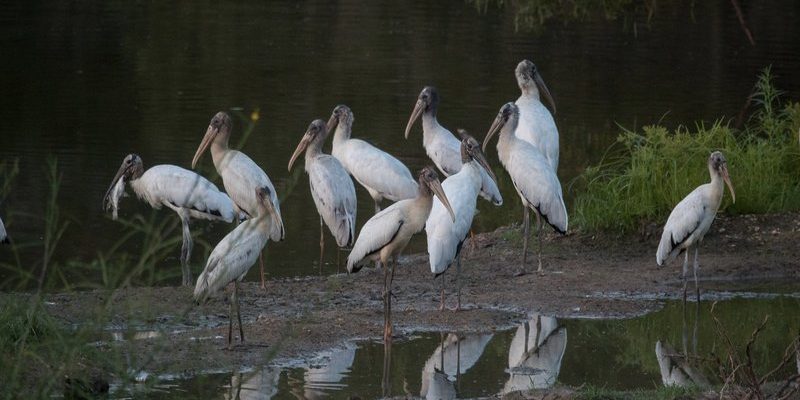
You might be wondering where exactly to look for these graceful creatures. From wetlands to grasslands, the stork’s habitats are as diverse as they are captivating. Let’s dive into the different places on this planet where you can find storks and what makes each location special for them. Grab your binoculars, and let’s get started on this avian adventure!
Understanding Stork Species
Before we dive into where to spot storks, it helps to know a bit about the different species. Storks belong to the family Ciconiidae, and there are about 19 species worldwide. Some of the most well-known are the white stork, the black stork, and the marabou stork. Each of these species has unique characteristics and habitat preferences.
The white stork is famous for its migratory habits. It travels between Europe and Africa, making it a seasonal sight. The black stork, a bit shyer, prefers forested areas near water bodies, while the marabou stork, often spotted in Africa, thrives in warmer, drier climates. These differences in preference shape where you’ll need to go to lay eyes on them!
The Wetlands: A Stork’s Paradise
One of the prime habitats for storks is the wetland. Wetlands provide the perfect hunting grounds for storks, as they’re rich in fish, amphibians, and invertebrates. Imagine walking through a lush landscape filled with marshes and lagoons—this is where storks thrive.
In Europe, places like the Camargue region in France and the Danube Delta are well-known for their stork populations. These areas are teeming with life, thanks to the mix of water, plant life, and abundant food sources. You can often spot these birds standing still, waiting patiently for their next meal, or gliding above the water in search of fish.
In Africa, wetlands like the Okavango Delta are home to several stork species. The unique ecosystem here attracts a variety of wildlife, making it an ideal spot for stork sightings. Here’s the thing: visiting wetlands not only offers a chance to spot storks but also allows you to enjoy the beauty of diverse ecosystems.
Grasslands and Open Fields: A Stork’s Feeding Ground
Storks are also frequently found in wide-open grasslands and fields, especially during their breeding seasons. These areas offer plenty of foraging opportunities, as they prey on insects, small mammals, and reptiles. If you picture vast rolling fields dotted with wildflowers and insects buzzing around, you’re imagining a perfect stork habitat.
In North America, the American white stork can be found in these open spaces, particularly in places like the Great Plains. During the day, you might see them foraging in the fields, their long legs wading through the tall grass.
It’s interesting to note how storks adapt to their environments. They often build their nests on tall trees or man-made structures in open areas, which gives them a vantage point to spot predators and prey alike. So, if you’re out in the countryside during springtime, keep your eyes peeled for a stork’s distinctive silhouette against the sky!
Coastal Regions: Storks by the Sea
You might not typically think of the coast when it comes to spotting storks, but some species absolutely love the salty air! Coastal regions provide a unique habitat for storks, especially in places where wetlands meet the ocean.
For example, the black stork can often be found near coastal marshes and estuaries. These areas are rich in food and serve as excellent nesting spots. In countries like Portugal and Spain, you can see storks along the rugged coastline, fishing in tidal pools or resting on cliffs.
The beauty of coastal areas is not just in their landscapes but in the variety of wildlife they attract, including storks. You might come across a group of storks standing on a sandbar, surveying the waves for their next meal. It’s a stunning sight that combines both the power of the ocean and the elegance of these magnificent birds.
Urban Areas: Storks in the City
Believe it or not, storks have become quite the urban dwellers! Cities in Europe and Asia have seen an increase in stork populations settling in urban areas. They often nest on rooftops, chimneys, and tall structures, thriving where humans live.
In cities like Berlin and Lisbon, you can often spot white storks nesting on buildings. They’ve adapted to city life surprisingly well. The abundance of food sources, like rats and mice, has drawn them closer to human habitats. Here’s the thing: urban stork watching can be surprisingly rewarding. Imagine enjoying a cup of coffee in a café while a proud stork sits nearby on a rooftop!
Keep an eye out for stork nests when you’re exploring towns known for their stork populations. In some places, local organizations even provide guided tours for birdwatching enthusiasts!
Migration Routes: The Journey of Storks
Storks are famous for their remarkable migration patterns. The white stork travels thousands of miles, flying from Europe to Africa and back each year. If you want to spot them during migration, timing is key.
During spring, they return to Europe around March and April, often taking breaks along their journey in various locations like Greece and Italy. You might be fortunate enough to catch a glimpse of them as they soar overhead in their distinctive V-shaped formations.
In the fall, their return journey starts around August, and they travel south again. Some prime locations for spotting storks during migration include the Burgas Lakes in Bulgaria and the Valley of the Rhone in France. It’s a breathtaking sight that reminds us of nature’s cycles and the incredible journeys these birds undertake.
Whether you’re wandering through wetlands, grasslands, or urban parks, spotting storks can be an absolutely delightful experience. Each habitat brings its own charm and wildlife, making every stork sighting unique.
So, next time you’re out in nature or even in the city, keep an eye on the skies and the rooftops. You never know when you might catch a glimpse of these elegant birds. Happy stork spotting!

